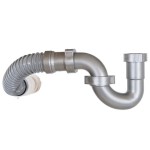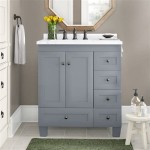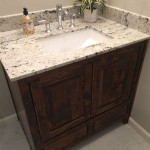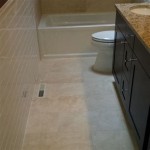How Much To Replace Bathroom Floor and Subfloor
Replacing a bathroom floor and subfloor is a common home renovation project, often necessitated by water damage, mold growth, or simply the desire for an aesthetic upgrade. Understanding the costs associated with this project is crucial for effective budgeting and planning. The overall expense can vary significantly depending on several factors, including the size of the bathroom, the materials chosen, the extent of the subfloor damage, and whether professional labor is employed.
This discussion aims to provide a comprehensive overview of the factors influencing the cost of bathroom floor and subfloor replacement. It will delve into the typical price ranges associated with different materials, the labor costs involved, and the additional expenses that homeowners might encounter during the project. By understanding these factors, individuals can make informed decisions regarding their bathroom renovation and avoid unexpected financial burdens.
Materials: Flooring and Subfloor
The cost of materials constitutes a significant portion of the overall expense. Both the finished flooring and the subfloor require careful consideration. Several flooring options are suitable for bathrooms, each with varying price points and aesthetic qualities.
Vinyl Flooring: Vinyl flooring is a popular choice due to its water resistance, durability, and relatively low cost. Sheet vinyl is generally the most affordable option, typically ranging from $2 to $5 per square foot. Luxury vinyl tile (LVT) and luxury vinyl plank (LVP) offer a more realistic appearance of natural materials and improved durability, with prices ranging from $3 to $10 per square foot.
Tile Flooring: Tile is another common choice for bathrooms, offering excellent water resistance and a wide range of design options. Ceramic tile is generally the most affordable, with prices ranging from $1 to $5 per square foot. Porcelain tile is denser and more durable than ceramic tile, with prices ranging from $3 to $10 per square foot. Natural stone tile, such as marble or granite, is the most expensive option, with prices ranging from $5 to $30 or more per square foot.
Laminate Flooring: While not as water-resistant as vinyl or tile, laminate flooring can be used in bathrooms if properly installed and maintained. It offers a more affordable alternative to hardwood and comes in a variety of realistic wood-look designs. Laminate flooring typically costs between $2 and $8 per square foot.
The subfloor is the foundation upon which the finished flooring is installed. The most common subfloor materials are plywood and oriented strand board (OSB). Plywood is generally considered to be more water-resistant and durable than OSB, making it a better choice for bathrooms. The cost of plywood typically ranges from $20 to $40 per sheet, depending on the thickness and grade. OSB is a more affordable option, with prices ranging from $15 to $30 per sheet.
When replacing the subfloor, it's important to choose a material that is appropriate for the finished flooring and the bathroom environment. A thicker subfloor will provide more support and reduce the risk of flexing or sagging, especially under heavier flooring materials like tile. Choosing a water-resistant subfloor material can help to prevent water damage and mold growth.
In addition to the flooring and subfloor materials, homeowners also need to factor in the cost of underlayment, adhesives, grout (for tile), and sealant. Underlayment provides a smooth and even surface for the flooring to be installed on and can also provide sound insulation and moisture protection. Adhesives are used to secure the flooring to the subfloor. Grout is used to fill the gaps between tiles and sealant is used to waterproof the perimeter of the floor.
Labor Costs: Hiring a Professional vs. DIY
The labor costs associated with bathroom floor and subfloor replacement can vary significantly depending on whether a professional contractor is hired or the work is done as a DIY project. Hiring a professional contractor offers several advantages, including expertise, experience, and access to specialized tools and equipment. However, it also comes with a higher cost.
Professional contractors typically charge by the hour or by the square foot. Hourly rates can range from $50 to $100 or more, depending on the contractor's experience and location. Per-square-foot rates for bathroom floor and subfloor replacement can range from $4 to $10 or more, depending on the complexity of the project and the materials used.
The labor cost for removing the old flooring and subfloor typically ranges from $1 to $3 per square foot. This includes the cost of disposing of the old materials. The labor cost for installing the new subfloor typically ranges from $1 to $3 per square foot. The labor cost for installing the new flooring can vary significantly depending on the type of flooring. Vinyl flooring is generally the least expensive to install, with labor costs ranging from $1 to $3 per square foot. Tile flooring is more expensive to install, with labor costs ranging from $4 to $8 per square foot. Laminate flooring typically costs between $2 and $4 per square foot to install.
Doing the work as a DIY project can save a significant amount of money on labor costs. However, it also requires a certain level of skill and experience. Homeowners should carefully assess their abilities and comfort level before attempting a DIY bathroom floor and subfloor replacement. It's important to have the necessary tools and equipment, as well as a good understanding of the installation process. Mistakes can be costly and time-consuming to fix. Furthermore, improper installation can lead to water damage and other problems down the road.
If opting for a DIY approach, remember to factor in the cost of tool rentals or purchases. A circular saw, jigsaw, measuring tape, level, safety glasses, and knee pads are essential. For tile installation, a tile saw, notched trowel, grout float, and sponge are also required.
Ultimately, the decision of whether to hire a professional or do the work as a DIY project depends on the homeowner's budget, skill level, and time constraints. If unsure, it is advisable to obtain quotes from several qualified contractors before making a decision.
Additional Expenses and Considerations
Beyond the cost of materials and labor, several additional expenses and considerations can impact the overall budget for a bathroom floor and subfloor replacement project. These include:
Subfloor Repairs: If the subfloor is damaged, it may need to be repaired before the new flooring can be installed. Minor repairs, such as filling cracks or patching holes, can be done relatively easily. However, more extensive damage, such as rot or water damage, may require replacing entire sections of the subfloor. The cost of subfloor repairs can range from a few hundred dollars to several thousand dollars, depending on the extent of the damage.
Mold Remediation: If mold is present, it will need to be removed before any other work can be done. Mold remediation can be a costly process, depending on the extent of the mold growth and the type of mold. Mold remediation typically involves removing the affected materials, cleaning the area with antimicrobial solutions, and preventing future mold growth. The cost of mold remediation can range from $500 to several thousand dollars.
Plumbing Modifications: If the toilet or other plumbing fixtures need to be moved or modified, this will add to the cost of the project. Plumbing modifications should be done by a licensed plumber. The cost of plumbing modifications can range from a few hundred dollars to several thousand dollars, depending on the complexity of the work.
Electrical Work: If electrical outlets or wiring need to be moved or modified, this will also add to the cost of the project. Electrical work should be done by a licensed electrician. The cost of electrical work can range from a few hundred dollars to several thousand dollars, depending on the complexity of the work.
Permits: In some areas, a building permit may be required for bathroom floor and subfloor replacement projects. The cost of a building permit can vary depending on the location and the scope of the project.
Disposal Fees: The cost of disposing of the old flooring and subfloor materials can also add to the overall expense. Many landfills charge a fee for disposal. These fees often depend on the weight and volume of the materials being disposed of.
Unexpected Issues: During the demolition process, unexpected issues may be uncovered, such as hidden water damage or structural problems. These issues can add to the cost of the project and should be addressed promptly to prevent further damage.
Contingency Fund: It is advisable to set aside a contingency fund of 10-20% of the total budget to cover unexpected expenses. This will help to prevent financial surprises during the project.
Careful planning and budgeting can help ensure a successful bathroom floor and subfloor replacement project. By understanding the various factors that can impact the cost, homeowners can make informed decisions and avoid unexpected expenses.

How To Remove And Replace Rotten Subfloors Diy For Beginners

Subfloor Replacement Cost S Fixr

Free Advice How Much Does A Subfloor Repair Cost

Subfloor Replacement Cost S Fixr

Let S Repair The Bathroom Subfloor My Perpetual Project

Subfloor Replacement Cost S Fixr

Tiling On Wooden Floors Part 2 Sub Floor Preparation Bathroom Guru

Bathroom Subfloor Tips Every Diyer And Professional Should Know Home Repair Tutor

Let S Repair The Bathroom Subfloor My Perpetual Project

How Much Does It Cost To Replace A Subfloor 2025
Related Posts







